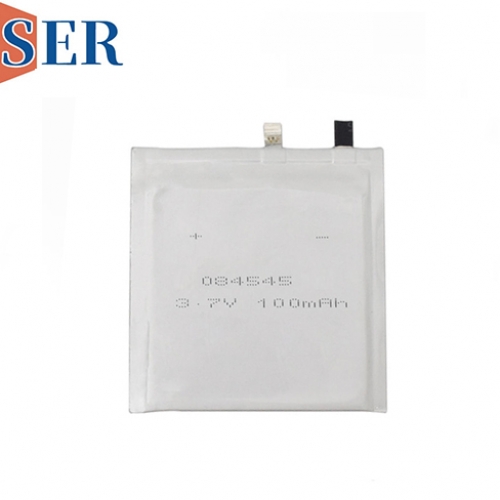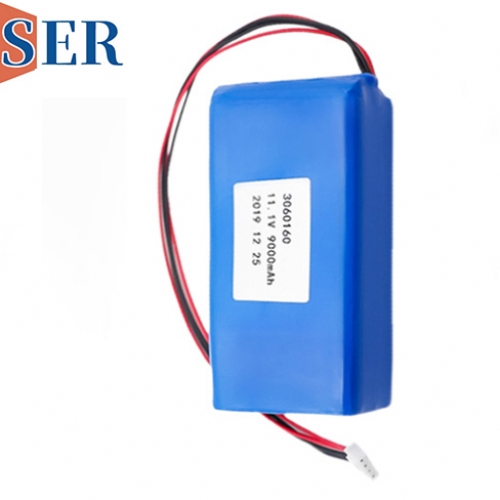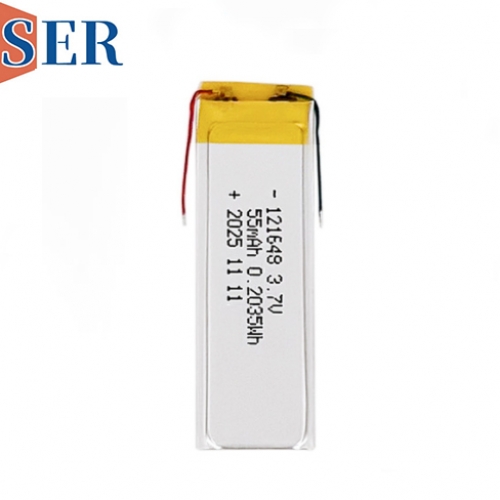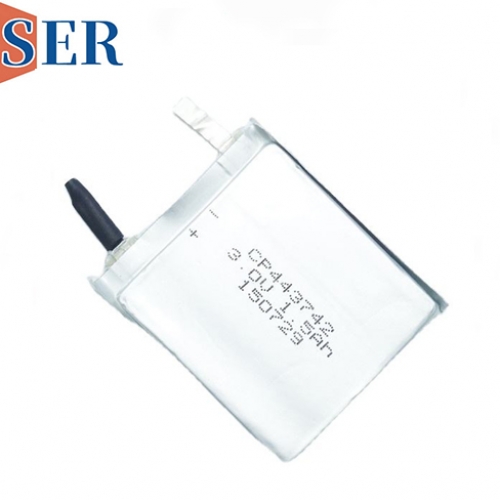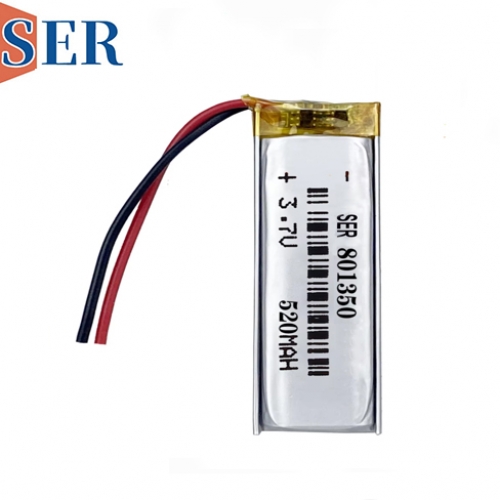Custom 3.7 Volt Lithium Ion Polymer Battery LP502050 500mAh 3.7V for Laser Pointer: A China Lipo Battery Manufacturer's Perspective
Custom 3.7 Volt Lithium Ion Polymer Battery LP502050 500mAh 3.7V for Laser Pointer: A China Lipo Battery Manufacturer's Perspective
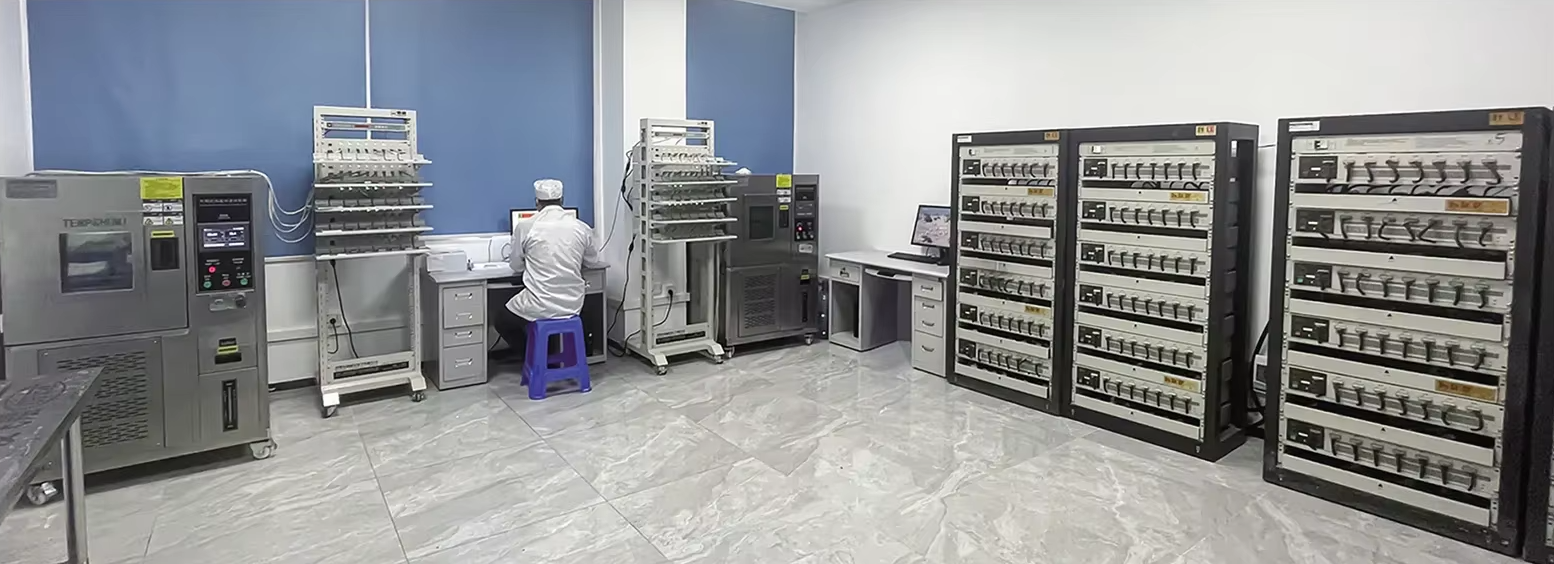
Introduction
In the ever - evolving world of portable electronic devices, the demand for high - performance, reliable, and customized batteries continues to rise. Laser pointers, as one of the common portable devices, require a power source that can provide a stable voltage output, a reasonable capacity, and a compact size. The 3.7 Volt Lithium Ion Polymer Battery LP502050 500mAh 3.7V has emerged as a popular choice for laser pointer manufacturers. As a China Lipo battery manufacturer, we have extensive experience in producing and customizing such batteries to meet the diverse needs of our clients. In this article, we will delve into the various aspects of this specific battery, including its technology, advantages, customization options, production process, quality control, and market applications.
Understanding Lithium Ion Polymer Battery Technology
1.1 Basic Principles
Lithium - ion polymer batteries are a type of rechargeable battery that uses lithium ions as the charge carriers. In the LP502050 500mAh 3.7V battery, the basic working principle involves the movement of lithium ions between the anode and cathode during charging and discharging cycles. During charging, an external electrical current forces lithium ions to move from the cathode to the anode through the electrolyte. When the battery is discharged, the lithium ions flow back from the anode to the cathode, generating an electrical current that powers the laser pointer.
1.2 Polymer Electrolyte
One of the key features of lithium - ion polymer batteries is the use of a polymer electrolyte instead of a liquid electrolyte found in traditional lithium - ion batteries. The polymer electrolyte provides several advantages. It allows for a more flexible battery design, enabling the production of batteries in various shapes and sizes, such as the LP502050 form factor. Additionally, the polymer electrolyte offers better safety performance as it reduces the risk of leakage and is less prone to thermal runaway compared to liquid - electrolyte batteries.
1.3 Electrode Materials
The anode and cathode materials play a crucial role in determining the battery's performance. For the LP502050 500mAh 3.7V battery, common anode materials include graphite, which has a high capacity for lithium - ion intercalation. Cathode materials often used are lithium cobalt oxide (LiCoO₂), lithium manganese oxide (LiMn₂O₄), or lithium iron phosphate (LiFePO₄). Each of these cathode materials has its own set of advantages and disadvantages in terms of energy density, cycle life, and safety.
Advantages of the LP502050 500mAh 3.7V Battery for Laser Pointers
2.1 High Energy Density
The 500mAh capacity of the LP502050 battery provides a relatively high energy density for its size. This means that the laser pointer can operate for an extended period on a single charge, which is essential for users who need to use the laser pointer for presentations, teaching, or other applications without frequent recharging.
2.2 Stable Voltage Output
The 3.7V nominal voltage of the battery ensures a stable power supply to the laser pointer. A stable voltage is crucial for the proper functioning of the laser diode, as fluctuations in voltage can affect the laser's brightness, beam quality, and overall performance.
2.3 Lightweight and Compact Design
The LP502050 form factor, with its dimensions of approximately 5.0mm in thickness, 20mm in width, and 50mm in length, makes it an ideal choice for laser pointers. Its lightweight and compact design do not add significant bulk to the laser pointer, allowing for easy portability and handling.
2.4 Long Cycle Life
Lithium - ion polymer batteries generally have a long cycle life, and the LP502050 500mAh 3.7V battery is no exception. With proper charging and discharging practices, it can undergo hundreds of charge - discharge cycles without a significant loss of capacity. This reduces the need for frequent battery replacements, saving costs for the end - users.
Customization Options for the LP502050 Battery
3.1 Electrical Performance Customization
As a China Lipo battery manufacturer, we understand that different laser pointer models may have varying power requirements. We can customize the electrical performance of the LP502050 battery, such as adjusting the discharge rate. For example, if a laser pointer requires a higher current output for a brighter laser beam, we can design the battery to have a higher discharge rate capability while still maintaining its safety and cycle life.
3.2 Shape and Size Customization
Although the LP502050 has a standard form factor, we can also offer customization in terms of shape and size to some extent. For laser pointers with unique designs, we can modify the battery's dimensions to fit perfectly into the device's battery compartment. This may involve adjusting the thickness, width, or length within the technical limitations of the battery technology.
3.3 Protection Circuit Customization
To ensure the safety of the battery and the laser pointer, we can customize the protection circuit integrated into the battery. The protection circuit can prevent over - charging, over - discharging, and short - circuiting. We can adjust the parameters of the protection circuit according to the specific requirements of the laser pointer, such as setting different over - charge and over - discharge voltage thresholds.
Production Process of the LP502050 500mAh 3.7V Battery
4.1 Electrode Preparation
The production process starts with the preparation of the anode and cathode electrodes. The anode and cathode materials are mixed with binders, conductive agents, and solvents to form a slurry. This slurry is then coated onto a current collector, typically copper for the anode and aluminum for the cathode. After coating, the electrodes are dried and calendared to achieve the desired thickness and porosity.
4.2 Electrolyte Application
Once the electrodes are prepared, the polymer electrolyte is applied. The polymer electrolyte can be in the form of a gel or a solid - state film. It is carefully applied to ensure good contact between the electrodes and the electrolyte, which is essential for efficient ion transport.
4.3 Battery Assembly
The anode, cathode, and electrolyte layers are then assembled into a battery cell. In the case of the LP502050 battery, the layers are stacked or wound together, depending on the production method. The assembled cell is then placed into a battery case, which can be made of aluminum or other materials to provide mechanical protection.
4.4 Formation and Testing
After assembly, the battery undergoes a formation process. This involves charging and discharging the battery at controlled conditions to activate the electrode materials and establish a stable solid - electrolyte interphase (SEI) layer on the anode. After formation, the battery is subjected to a series of tests, including electrical performance tests (such as capacity measurement, voltage testing, and internal resistance testing) and safety tests (such as over - charge, over - discharge, and short - circuit tests).
Quality Control in Battery Production
5.1 Raw Material Inspection
Quality control starts at the raw material stage. We inspect all incoming raw materials, including the anode and cathode materials, electrolytes, current collectors, and battery cases. The inspection includes checking the purity, particle size distribution, and other physical and chemical properties of the materials to ensure they meet our strict quality standards.
5.2 In - Process Inspection
During the production process, we conduct in - process inspections at various stages. For example, after electrode coating, we check the thickness, uniformity, and adhesion of the electrode slurry. During battery assembly, we inspect the alignment of the electrodes and the integrity of the battery case. These in - process inspections help to identify and correct any potential problems early in the production cycle.
5.3 Final Product Testing
All finished LP502050 500mAh 3.7V batteries undergo a comprehensive final product testing. In addition to the electrical and safety tests mentioned earlier, we also conduct environmental tests, such as temperature cycling tests and humidity tests, to ensure that the batteries can perform reliably under different operating conditions.
Market Applications and Future Trends
6.1 Market Applications
The LP502050 500mAh 3.7V battery is widely used in various types of laser pointers, including those for presentations, star - pointing, and industrial alignment. Its compact size, high energy density, and stable performance make it suitable for both consumer and professional - grade laser pointers.
6.2 Future Trends
As the laser pointer market continues to evolve, there are several future trends for the LP502050 battery. One trend is the demand for even higher energy densities to support longer operating times and more powerful laser beams. This may require the development of new electrode materials and battery designs. Another trend is the increasing focus on battery safety. With the growing awareness of the potential hazards of lithium - ion batteries, there will be a greater emphasis on improving the safety features of the LP502050 battery, such as enhancing the protection circuit and developing more stable electrolyte systems.
Conclusion
The 3.7 Volt Lithium Ion Polymer Battery LP502050 500mAh 3.7V is a well - suited power source for laser pointers. Its advanced lithium - ion polymer technology offers numerous advantages, including high energy density, stable voltage output, lightweight design, and long cycle life. As a China Lipo battery manufacturer, we are committed to providing customized solutions to meet the specific requirements of laser pointer manufacturers. Through our rigorous production process and strict quality control measures, we ensure that each LP502050 battery meets the highest standards of performance and safety. Looking ahead, we will continue to innovate and adapt to the changing market demands, contributing to the development of the laser pointer industry.

